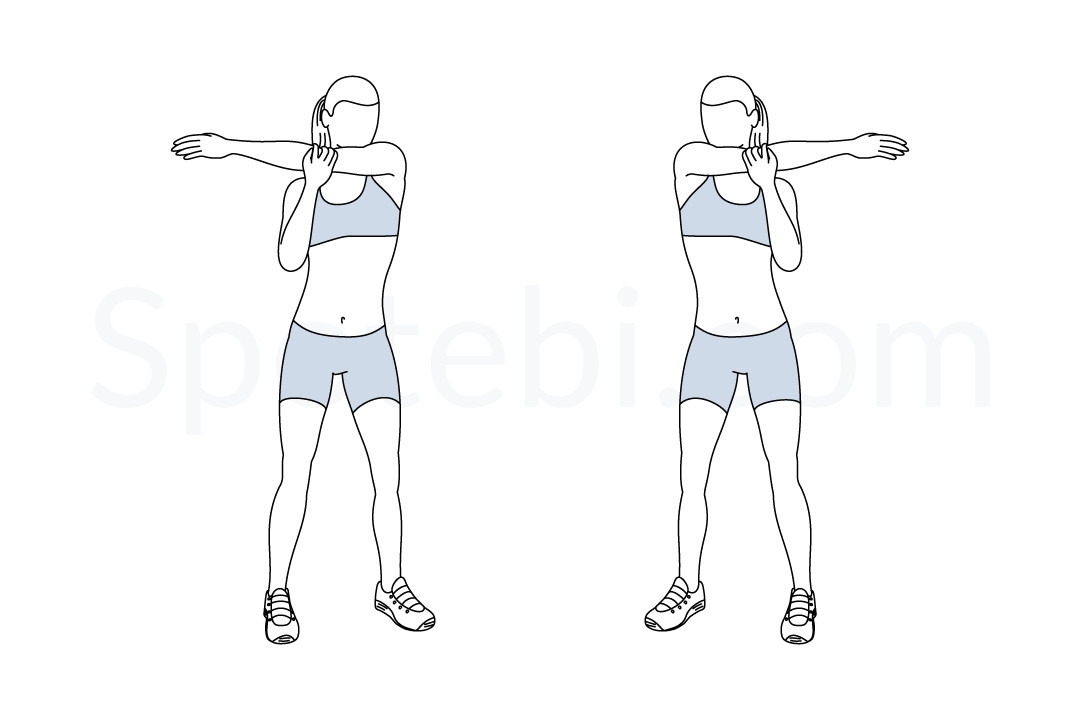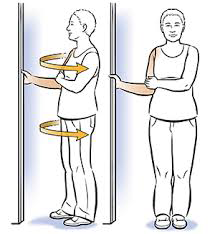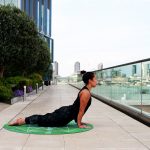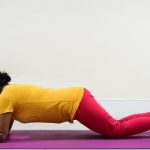4 stretches that help stave off shoulder problems

Photo by Jesper Aggergaard
Stretching your muscles fixes the shortening that occurs with disuse and extends muscles to their full length. The more you stretch the muscles, the longer and more flexible they’ll become. That will help increase your range of motion, ward off pain, reduce the risk for injury, and improve your posture.
The shoulder is the body’s most complicated joint. It’s where the ends of the collarbone, upper arm bone, and shoulder blade meet. And it’s prone to arthritis (a wearing away of the cartilage between the bones), as well as tears or tendinitis (inflammation) in the rotator cuff — the group of tendons that helps you raise and rotate your arm. Shoulder pain can keep you from being able to raise your arms to get dressed, or reach up to a cupboard or out to a door.
But an easy way to stave off shoulder problems is to regularly stretch the muscles that support the joints. “The muscles need to be long and flexible to stay healthy. You’re more vulnerable to injury when your shoulder muscles are tight and restricted,” explains Clare Safran-Norton, clinical supervisor of rehabilitation services at Harvard-affiliated Brigham and Women’s Hospital.
How stretching helps
Muscles are a little like cotton fabrics. They may shrink up slightly, but if you pull on the fibers, you can stretch out the fabric again.
Stretching your muscles fixes the shortening that occurs with disuse and extends muscles to their full length. The more you stretch the muscles, the longer and more flexible they’ll become. That will help increase your range of motion, ward off pain, reduce the risk for injury, and improve your posture.
Types of stretches
The best way to stretch muscles is with long, static (motionless) stretches that last 30 seconds to two minutes. But don’t jump right to this step.
Warm up the muscles first to get blood and oxygen to them and make them more pliable. You can do this with exercise (take a brisk walk, pumping your arms, or go for a swim). Or you can try a few minutes of dynamic stretching — repeatedly moving a joint through its available range of motion, without holding a position. Just roll your shoulders backward and forward a few times or make windmill motions with your arms (but not too vigorously).
Insider tips
Safran-Norton says that stretches should be gentle and pain-free. “If there’s pain, you may be injuring your muscles,” she notes.
She also warns never to bounce your stretched muscles, which can cause injury and keep you from a productive stretch. “Bouncing sets off a protective mechanism called the stretch reflex. The muscle will recoil so you won’t overstretch it. But as a result, you’ll never get to a true stretch,” she says. “A true stretch is sustained, with no bouncing.”
Getting started
Try the shoulder stretches we’ve laid out here. All you need is a doorway or wall.
Safran-Norton recommends stretching your shoulders three to seven times per week. “If you’re really stiff, stretch daily. If you’re already flexible, it’s fine to stretch every other day,” she says. But avoid stretching for too long or too vigorously: back off quickly if you start to feel pain.
Other tips: make sure you stand up straight when you stretch, and make sure you’re hydrated.
| 1.Wall climb
Movement 2.Chest and shoulder stretch
3.Shoulder stretch
4.Shoulder stretch with rotation
|






 Movement: Stand alongside a doorway or wall. Extend your right arm and put your right hand on the edge of the door frame slightly below shoulder level, palm facing forward and touching the door frame. Keep your shoulders down and back. Slowly turn your body to the left, away from the door frame, until you feel the stretch in your chest and shoulder. Hold 10 to 30 seconds. Return to the starting position. Repeat three to four times, then repeat on the opposite side.
Movement: Stand alongside a doorway or wall. Extend your right arm and put your right hand on the edge of the door frame slightly below shoulder level, palm facing forward and touching the door frame. Keep your shoulders down and back. Slowly turn your body to the left, away from the door frame, until you feel the stretch in your chest and shoulder. Hold 10 to 30 seconds. Return to the starting position. Repeat three to four times, then repeat on the opposite side. Movement: Stand wi
Movement: Stand wi Movement: Stand up straight with your feet hip-width apart and your hands by your sides. Place the back of your right hand against the small of your back at your waist. Your fingers should be pointing up. Slowly slide your right hand farther up your back as high as you can. Hold 10 to 30 seconds. Repeat three to four times, then repeat with left hand. Information courtesy:Harvard Medical School
Movement: Stand up straight with your feet hip-width apart and your hands by your sides. Place the back of your right hand against the small of your back at your waist. Your fingers should be pointing up. Slowly slide your right hand farther up your back as high as you can. Hold 10 to 30 seconds. Repeat three to four times, then repeat with left hand. Information courtesy:Harvard Medical School









